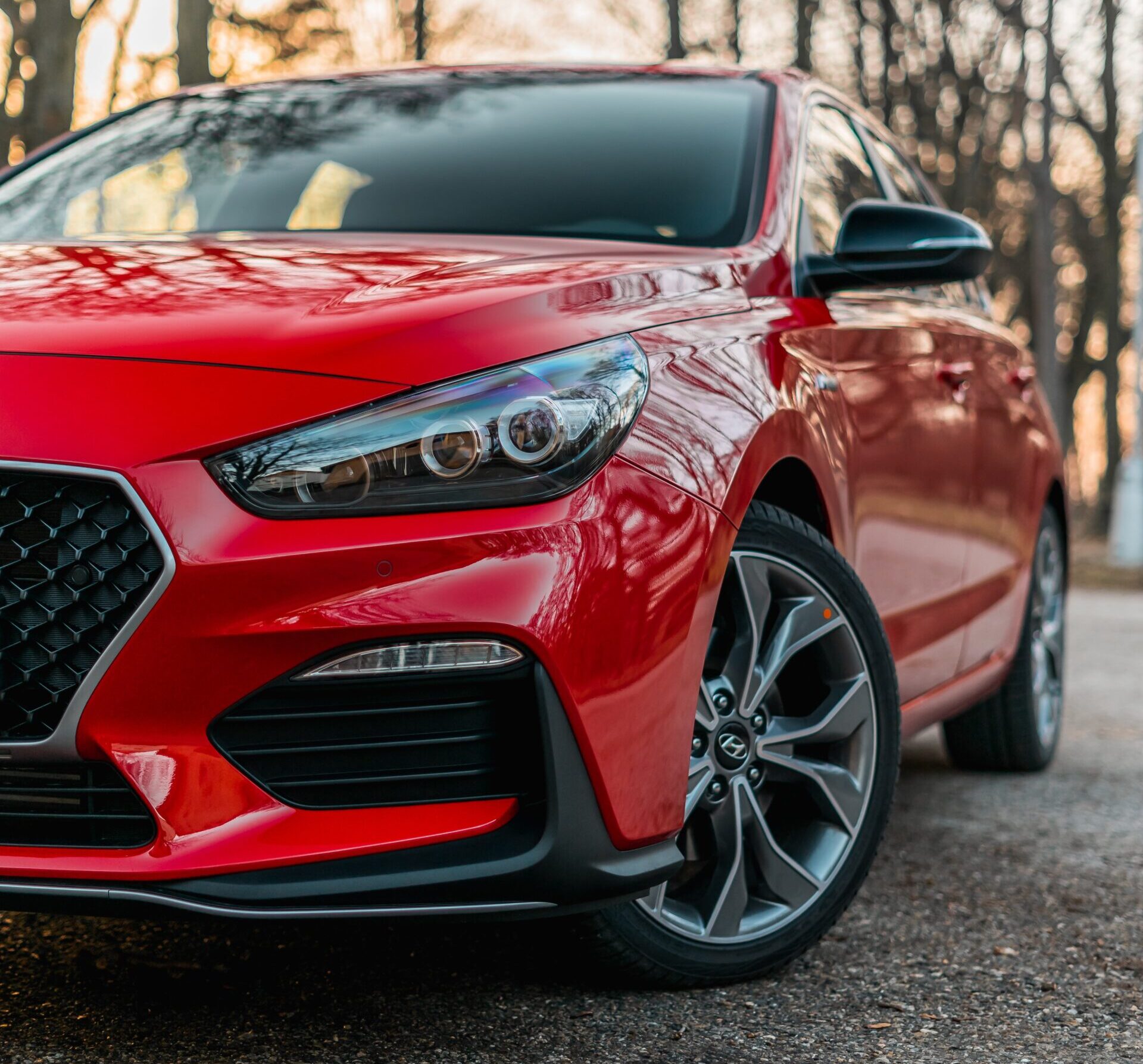Support our educational content for free when you purchase through links on our site. Learn more
Are Car Leases Still Worth It? 10 Reasons You Need to Know! 🚗 [2025]

Have you ever found yourself torn between leasing and buying a car? You’re not alone! With the automotive landscape constantly evolving, many drivers are left wondering, “Are car leases still worth it?” In this comprehensive guide, we’ll dive deep into the pros and cons of leasing versus buying, exploring ten compelling reasons that could sway your decision. Did you know that nearly 30% of new cars are leased in the U.S.? This statistic highlights the popularity of leasing, but is it the right choice for you?
Join us as we unravel the complexities of car leasing, from understanding lease terms to evaluating financial implications. By the end of this article, you’ll have a clearer picture of whether leasing is your best bet or if buying a car outright is the way to go. Buckle up; it’s going to be an informative ride!
Key Takeaways
- Leasing offers lower monthly payments, making it budget-friendly for many consumers.
- Mileage limits can lead to penalties if exceeded, so consider your driving habits.
- No ownership means you don’t build equity in the vehicle, which can be a drawback for some.
- Tax benefits may be available for business use, making leasing an attractive option for entrepreneurs.
- End-of-lease options provide flexibility, allowing you to return the vehicle, buy it, or lease a new one.
Ready to explore the latest car lease deals? Check out our Latest Car Lease Deals for the best offers!
Table of Contents
Quick Tips and Facts
The Evolution of Car Leasing: A Historical Perspective
Are Car Leases Still Worth It? The Pros and Cons
Understanding Lease Terms: What You Need to Know
The Financial Breakdown: Cost Analysis of Leasing vs. Buying
Leasing vs. Buying: Which Option Suits Your Lifestyle?
Top 10 Reasons to Consider Leasing Your Next Vehicle
Common Myths About Car Leasing Debunked
How to Choose the Right Lease: Tips for Smart Shoppers
The Impact of Mileage Limits on Your Lease
End-of-Lease Options: What Happens When Your Lease Ends?
The Future of Car Leasing: Trends and Predictions
Conclusion
Recommended Links
FAQ
Reference Links
Quick Tips and Facts
-
Leasing vs. Buying: Leasing can be a great option for those who prefer driving newer models every few years, but it often comes with mileage limits and no ownership at the end of the term. Buying, on the other hand, allows you to keep the car long-term, but comes with higher monthly payments.
-
Mileage Limits: Most leases come with mileage restrictions (typically 12,000-15,000 miles per year). Exceeding these limits can lead to hefty penalties, so consider your driving habits!
-
Depreciation: When you lease, you’re essentially paying for the car’s depreciation during the lease term. This means you might be paying for a car that you never own.
-
Insurance Costs: Leased vehicles often require full coverage insurance, which can increase your monthly expenses.
-
End-of-Lease Options: At the end of your lease, you usually have the option to buy the car at its residual value, return it, or lease a new vehicle.
The Evolution of Car Leasing: A Historical Perspective
Car leasing has come a long way since its inception in the 1960s. Initially popularized by businesses to manage fleets, it has now become a common choice for individual consumers. Here’s a quick timeline:
| Year | Milestone |
|---|---|
| 1960s | Leasing emerges as a business tool. |
| 1980s | Consumer leasing gains popularity; manufacturers start offering lease programs. |
| 1990s | The rise of luxury leasing; brands like BMW and Mercedes-Benz lead the charge. |
| 2000s | Economic downturn leads to stricter leasing terms. |
| 2010s | Technology integration; online leasing options become available. |
| 2020s | Growth of electric vehicle leases; sustainability becomes a key focus. |
As you can see, leasing has evolved to cater to changing consumer needs, and today, it’s more accessible than ever!
Are Car Leases Still Worth It? The Pros and Cons
When considering whether to lease or buy, it’s essential to weigh the pros and cons. Here’s a breakdown:
Pros of Leasing 🚗
- Lower Monthly Payments: Leasing often results in lower monthly payments compared to buying.
- Newer Models: You can drive a new car every few years, enjoying the latest technology and features.
- Warranty Coverage: Most leases are covered by warranty for the duration, minimizing repair costs.
- Tax Benefits: For business owners, leasing can offer tax deductions.
Cons of Leasing ❌
- No Ownership: At the end of the lease, you don’t own the car.
- Mileage Restrictions: Exceeding mileage limits can lead to costly penalties.
- Higher Insurance Costs: Full coverage is usually required, which can increase your premiums.
- Long-Term Costs: Leasing continuously may cost more than buying a car outright.
Understanding Lease Terms: What You Need to Know
Before signing on the dotted line, it’s crucial to understand the lease terms. Here are some key components:
Key Lease Terms Explained
| Term | Description |
|---|---|
| Capitalized Cost | The price of the vehicle being leased. |
| Residual Value | The estimated value of the car at the end of the lease. |
| Money Factor | The interest rate for the lease, expressed as a decimal. |
| Mileage Allowance | The maximum number of miles you can drive without penalty. |
| Lease Term | The duration of the lease, typically 24-36 months. |
Tips for Negotiating Lease Terms
- Research: Know the fair market value of the car you want to lease.
- Negotiate: Don’t hesitate to negotiate the capitalized cost and money factor.
- Read the Fine Print: Understand all fees and penalties associated with the lease.
The Financial Breakdown: Cost Analysis of Leasing vs. Buying
Let’s dive into the financial aspects of leasing versus buying. Here’s a comparative analysis:
Cost Comparison Table
| Aspect | Leasing | Buying |
|---|---|---|
| Monthly Payments | Lower | Higher |
| Down Payment | Often lower | Typically higher |
| Ownership | No | Yes |
| Maintenance Costs | Often covered | Owner’s responsibility |
| Depreciation | Paid by lessee | Owner bears the loss |
Financial Insights
- Leasing: You pay for the depreciation of the vehicle during the lease term, plus interest and fees.
- Buying: You own the vehicle outright after the loan is paid off, which can lead to long-term savings.
Leasing vs. Buying: Which Option Suits Your Lifestyle?
Choosing between leasing and buying often depends on your lifestyle and financial situation. Here are some considerations:
When to Lease
- You enjoy driving a new car every few years.
- You drive less than the mileage limits.
- You prefer lower monthly payments and maintenance costs.
When to Buy
- You plan to keep the car for a long time.
- You drive a lot and need flexibility with mileage.
- You want to build equity in your vehicle.
Top 10 Reasons to Consider Leasing Your Next Vehicle
- Lower Monthly Payments: Keep more cash in your pocket! 💰
- Access to New Technology: Drive the latest models with cutting-edge features.
- Warranty Coverage: Enjoy peace of mind with minimal repair costs.
- Flexibility: Easily switch vehicles every few years.
- Tax Benefits: Potential deductions for business use.
- No Resale Hassles: Avoid the stress of selling a used car.
- Depreciation Protection: You’re not affected by the car’s depreciation.
- Maintenance Packages: Many leases include maintenance, saving you money.
- Lease Transfers: Some leases allow you to transfer to another driver.
- Fuel Efficiency: Newer cars often have better fuel economy, saving you money at the pump.
Common Myths About Car Leasing Debunked
Let’s bust some common myths surrounding car leasing:
Myth 1: Leasing is Just Renting
Reality: While leasing is similar to renting, it’s a structured agreement that allows you to drive a new car without the long-term commitment of ownership.
Myth 2: You Can’t Customize a Leased Car
Reality: While you can’t make permanent modifications, many leases allow for minor customizations.
Myth 3: Leasing is Always More Expensive
Reality: Depending on your driving habits and preferences, leasing can be more cost-effective than buying.
How to Choose the Right Lease: Tips for Smart Shoppers
Choosing the right lease can feel overwhelming, but we’ve got you covered! Here’s how to make an informed decision:
Steps to Choose the Right Lease
- Assess Your Needs: Consider your driving habits, budget, and preferences.
- Research Vehicles: Look for models that fit your lifestyle and have good lease deals.
- Compare Offers: Get quotes from multiple dealerships to find the best deal.
- Negotiate Terms: Don’t be afraid to negotiate the capitalized cost and money factor.
- Read the Contract: Ensure you understand all terms, fees, and penalties before signing.
The Impact of Mileage Limits on Your Lease
Mileage limits can significantly affect your leasing experience. Here’s what you need to know:
Understanding Mileage Limits
- Standard Limits: Most leases offer 12,000-15,000 miles per year.
- Excess Mileage Fees: Exceeding the limit can lead to penalties, typically around $0.25 per mile.
Tips to Manage Mileage
- Plan Your Trips: Be mindful of your driving habits and plan accordingly.
- Consider a Higher Mileage Lease: If you drive a lot, look for leases with higher mileage limits.
End-of-Lease Options: What Happens When Your Lease Ends?
As your lease term comes to a close, you’ll have several options:
End-of-Lease Choices
- Return the Vehicle: Simply drop off the car and walk away.
- Purchase the Vehicle: Buy the car at its residual value.
- Lease a New Vehicle: Start fresh with a new lease on a different car.
Preparing for Lease-End
- Inspect the Vehicle: Check for any damages that may incur fees.
- Review Your Mileage: Ensure you haven’t exceeded the mileage limit.
- Gather Documentation: Have all necessary paperwork ready for the return process.
The Future of Car Leasing: Trends and Predictions
As we look ahead, the landscape of car leasing is evolving. Here are some trends to watch:
Emerging Trends
- Electric Vehicle Leases: With the rise of electric vehicles (EVs), leasing options are expanding in this sector. Check out our Electric Vehicle Leases for more info!
- Subscription Services: Some manufacturers are offering subscription models that combine leasing with flexibility.
- Sustainability Focus: Consumers are increasingly looking for eco-friendly leasing options.
Conclusion

So, are car leases still worth it? The answer largely depends on your personal circumstances, driving habits, and financial goals. Leasing can be a fantastic option for those who enjoy driving new cars and prefer lower monthly payments, but it’s essential to understand the potential downsides, such as mileage limits and lack of ownership.
Whether you choose to lease or buy, make sure to do your research and choose the option that best fits your lifestyle. Happy car hunting! 🚗✨
Recommended Links
- Latest Car Lease Deals
- Car Lease Basics
- Electric Vehicle Leases
- Credit Score and Car Leasing
- Auto Financing Options
FAQ

-
What is the average lease term?
- Most leases last between 24 to 36 months.
-
Can I negotiate my lease terms?
- Absolutely! Always negotiate the capitalized cost and money factor.
-
What happens if I exceed my mileage limit?
- You’ll incur penalties, typically around $0.25 per excess mile.
Reference Links
- Consumer Reports on Leasing vs. Buying
- Money with Katie: Why Leasing a Car is Like Setting Money on Fire
- Travelers Insurance: Leasing a Car: Pros and Cons
Conclusion

In summary, whether car leases are still worth it largely depends on your individual needs, driving habits, and financial situation. Leasing offers several advantages, such as lower monthly payments, the ability to drive newer models, and less hassle with maintenance. However, it also comes with drawbacks like mileage restrictions, no ownership at the end of the term, and potential penalties for excess wear and tear.
Positives of Leasing:
- Lower Monthly Payments: More budget-friendly for many consumers.
- Access to New Cars: Drive the latest models with the newest technology.
- Warranty Coverage: Less worry about repair costs during the lease term.
Negatives of Leasing:
- No Ownership: You don’t build equity in the vehicle.
- Mileage Limits: Can incur extra costs if you exceed the mileage cap.
- Higher Insurance Costs: Full coverage is often required, which can increase premiums.
Ultimately, if you value driving a new car every few years and prefer lower payments, leasing could be a great fit for you. However, if you drive extensively or prefer to own your vehicle long-term, buying may be the better option.
We hope this article has helped clarify the ins and outs of car leasing. Now that you’re equipped with the knowledge, you can make a confident decision that suits your lifestyle! 🚗✨
Recommended Links
- 👉 Shop Ford on: Ford Official Website
- 👉 Shop Toyota on: Toyota Official Website
- 👉 Shop Honda on: Honda Official Website
- 👉 Shop BMW on: BMW Official Website
- 👉 Shop Mercedes-Benz on: Mercedes-Benz Official Website
FAQ

What are the benefits of leasing a car compared to buying?
Benefits of Leasing vs. Buying
- Lower Monthly Payments: Leasing typically results in lower monthly payments compared to financing a purchase.
- Newer Models: You can drive a new car every few years, enjoying the latest features and technology.
- Maintenance Coverage: Many leases include warranty coverage, which can save you money on repairs.
- No Resale Hassles: At the end of the lease, you simply return the car without worrying about selling it.
Read more about “How Do You Calculate a Car Lease Payment? 10 Essential Steps to Save Big! 🚗💰”
How do car lease payments work and what factors affect the cost?
Understanding Lease Payments
Car lease payments are calculated based on the vehicle’s depreciation, the lease term, and the money factor (interest rate). Key factors include:
- Capitalized Cost: The negotiated price of the vehicle.
- Residual Value: The estimated value of the car at the end of the lease.
- Lease Term: The length of the lease, typically 24-36 months.
- Mileage Allowance: The maximum miles you can drive without incurring penalties.
What are the average car lease terms and mileage limits?
Lease Terms and Mileage
- Average Lease Terms: Most leases last between 24 to 36 months.
- Mileage Limits: Standard mileage limits are usually 12,000 to 15,000 miles per year. Exceeding these limits can lead to penalties, often around $0.25 per excess mile.
Can you negotiate the price of a car lease like you would when buying?
Negotiating Lease Terms
Yes, you can negotiate the terms of a lease. Key areas to negotiate include:
- Capitalized Cost: The price of the vehicle.
- Money Factor: The interest rate for the lease.
- Mileage Limits: If you drive a lot, consider negotiating for a higher mileage allowance.
What happens at the end of a car lease, and are there any penalties for terminating early?
End-of-Lease Options
At the end of your lease, you typically have three options:
- Return the Vehicle: Drop off the car and walk away.
- Purchase the Vehicle: Buy the car at its residual value.
- Lease a New Vehicle: Start a new lease on a different car.
Penalties for Early Termination: Ending a lease early can result in significant fees, so it’s essential to review your contract carefully.
How does leasing a car affect your credit score, and what are the requirements to qualify?
Impact on Credit Score
Leasing a car can affect your credit score similarly to a car loan. Key factors include:
- Credit Check: Most leasing companies will perform a credit check.
- Payment History: Making timely payments can positively impact your credit score.
- Debt-to-Income Ratio: Leasing companies may consider your overall financial situation.
Are there any tax benefits or deductions available for car leases, and how do they work?
Tax Benefits of Leasing
If you use the leased vehicle for business purposes, you may be eligible for tax deductions. Here’s how it works:
- Business Use: You can deduct a portion of your lease payments based on the percentage of business use.
- Sales Tax: In some states, you may only pay sales tax on the monthly payments rather than the full vehicle price.
For more detailed information on leasing vs. buying, check out Leasing vs. Buying a Car: Pros and Cons | Travelers Insurance.


